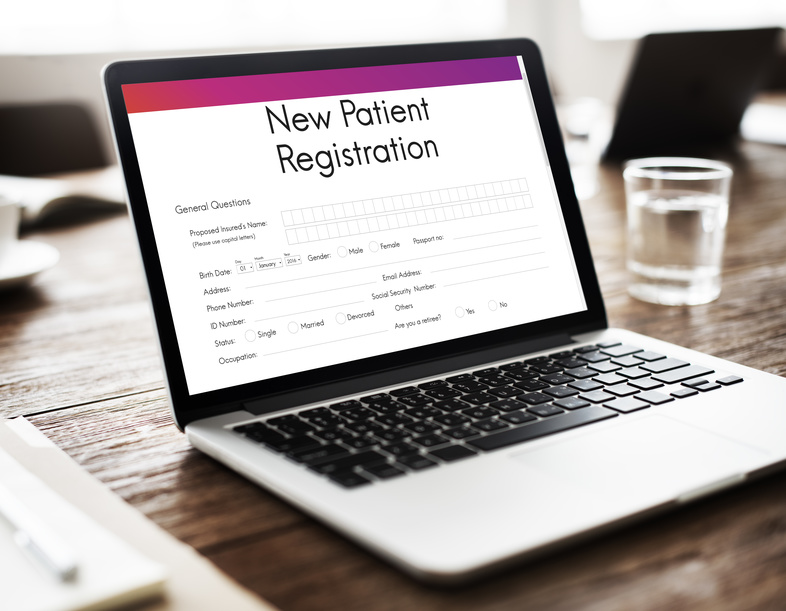My primary care physician (PCP) is an avid user of the patient portal. Within 24 hours of a visit, I receive an email informing me there is a new entry in the portal. He consistently updates the portal with a summary of my visit. If labs were obtained, he enters the results and includes a brief explanation in plain terms, informing me if any follow-up is needed. I love patient portals. However, they are not without flaws. In many cases, information is uploaded automatically without the appropriate context or clarification. Patients often access the information after hours, unable to discuss non-emergent concerns with the physician. In these cases, patients may worry unnecessarily as they struggle to understand and interpret the information.
In this article, I will review patient portals and provide tips for using them effectively as you navigate your healthcare journey.
What is a patient portal?
According to healthit.gov, a patient portal is a secure online website that gives patients convenient, 24-hour access to personal health information using an Internet connection. After logging in with a unique username and password, patients can view useful information stored in the electronic medical record, including a list of their diagnoses, prior doctor visits, discharge summaries, medications, allergies, immunizations, and lab results. Some portals allow you to schedule non-urgent appointments, send secure emails to your doctor, complete forms, and even pay your medical bills. Portals can also send you email alerts about upcoming appointments and reminders to schedule your annual checkup, annual screening exams (such as mammograms and colonoscopies), and flu shot.
Patient Portals: Pros
There are pros and cons to using patient portals, as discussed in an article by Patient Engagement HIT. One of the pros is improved communication. Patient portals are a great way for doctors and patients to engage with one another. Sending a secure email through the portal can be much more effective than calling the office, as it is nearly impossible to talk to your doctor during the work day while she is busy seeing patients. Further, there is no guarantee that you will be available when the doctor returns your call, triggering an annoying game of “phone tag”. The doctor can reply to your email during a lunch break, between patients, or at the end of the day, which can be more convenient for both parties. Another benefit of patient portals is improved accuracy of medical information. When patients have access to their health information, they can identify errors. While the portal may not allow you to edit the information directly, you can inform the doctor and he can make the necessary corrections. Ensuring your medical history is accurate will help to protect you from medical errors. Patient portals can also reduce unnecessary trips to the doctor’s office. Your doctor may be able to address certain non-urgent matters via secure email. Finally, studies show that individuals who use patient portals are more engaged and are more likely to take ownership of their health care, which can lead to better outcomes.
Patient Portals: Cons
To use a patient portal effectively, the user must have Internet access and a fair amount of computer literacy. This can pose a barrier to older individuals, those with cognitive disabilities, and individuals with severely limited financial resources. There are also language barriers, as most portals are only available in English. Another con is the existence of multiple patient portals and the lack of integration across various platforms. A patient with several doctors may have health information scattered across a variety of patient portals that don’t “talk to” each other. Perhaps the most significant con is a potential security breach resulting in unauthorized access to private health information. There are safeguards to protect this data from hackers, but there are no guarantees.
Despite valid concerns, in my opinion, the pros outweigh the cons. Follow these tips to increase your chances of having a positive experience with patient portals.
Tip #1: Confirm that your doctor uses the patient portal. Share on X

Just because your doctor’s office has a patient portal doesn’t mean your doctor actually uses it. My sister recently sent a secure message to one of her physicians via the portal and she never received a response. Be sure to ask how the doctors and office staff utilize the portal. Is it used only as a repository of information or as a means of two-way communication? Does the doctor check the portal regularly?
Tip #2- Protect your login credentials. Share on X

One of the best ways to keep your health information secure is to ensure the privacy of your login credentials. Do not share your username or password with others. In addition, refrain from using passwords that are easy to guess (i.e. your birth date). Resist the temptation to use the same password across multiple online platforms.
Tip #3- Use the patient portal for non-urgent matters only. Share on X
It is never appropriate to use the patient portal for urgent matters or emergencies. If you are not sure if your medical condition is urgent, contact your doctor’s office for advice. If you think you are having a medical emergency, call 911. While there may be occasions when the doctor feels comfortable addressing your concern via secure message, the portal is not a substitute for in-person appointments. If you send a message on the portal and you are asked to come into the office, it is in your best interest to be seen by the doctor.
Tip #4- If you don't understand what you see on the patient portal, ask questions. Share on X

Many physicians are concerned about patients being given access to results without the benefit of proper explanation. In many cases, results are automatically uploaded without the doctor’s knowledge, and often after the office has closed. Abnormal results are typically highlighted in red, bold ink, or preceded by an asterisk. Seeing results flagged as abnormal can produce anxiety and unnecessary worry. A slightly low or slightly elevated lab value is often not clinically significant, but there is no way for a patient to know this. If you have questions or concerns about the information on the patient portal, be sure to contact your doctor’s office. In most cases, the results of routine bloodwork can be discussed during normal business hours and are seldom an emergency. When doctors obtain labs to evaluate you for a potentially serious illness, they have usually made provisions for a healthcare provider to follow up on those results in a timely manner so that you can be properly notified. If you’re not sure if the results require urgent attention and you have not been contacted by your doctor, call the office for clarification.
Doctors and hospitals are incentivized to use electronic medical records and patient portals through a variety of programs instituted by the federal government. As such, their use will continue to increase, and patients will need to learn how to utilize this technology effectively. These 4 tips will help you to use patient portals safely and effectively. If you have additional tips or would like to share your experience with using patient portals, please leave a comment below.
Image credit: Fotolia
Are you a Your GPS Doc subscriber? If not, please click here to receive notifications about new blog posts and special offers, as well as useful guides and additional resources exclusive to Your GPS Doc subscribers.








A very informative post for current times. These are great tips for all patients to heed with the current advancement of healthcare management. Thanks so much for sharing!
Thanks for reading, Nonye!
Great post, Doc, and very informative!
Will share on my FB Page!
Thank you!
Thanks for your support and shares, Dr. Bradley!
What great feedback on patient portals. I used to use the portal to share my questions and concerns about my parents with their doctor. We agreed that I would share my questions and concerns with them about a week prior to their doctor appointments. This helped me stay in touch with the PCP and give my parents the freedom to talk during appointments. It also helped the doctor watch for things I mentioned. Thanks for this article!
Thanks for your comment, Tandy! That is a wonderful way to utilize the patient portal.